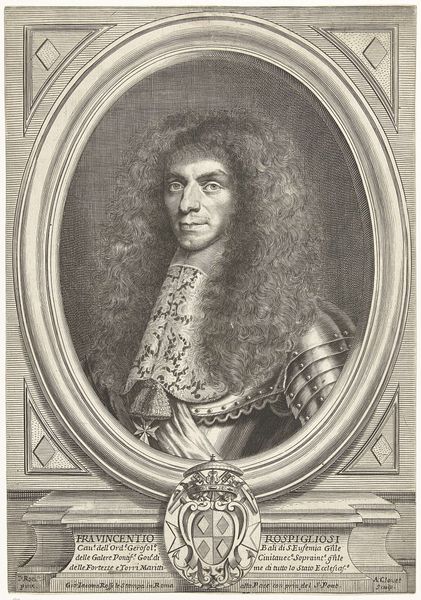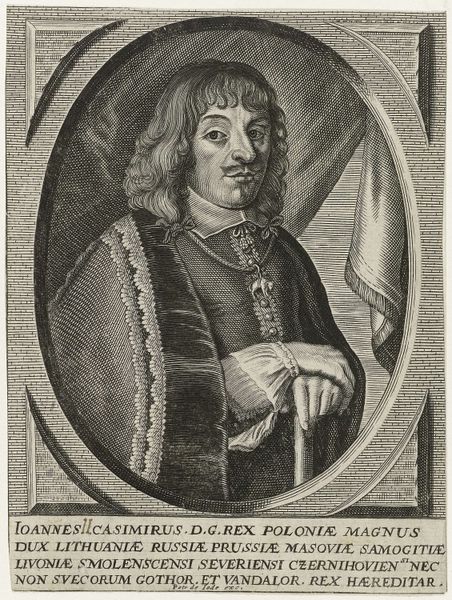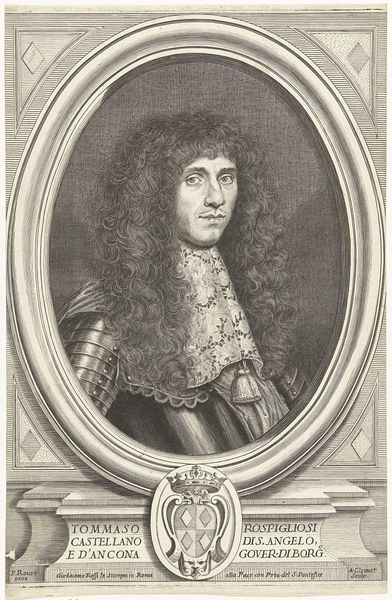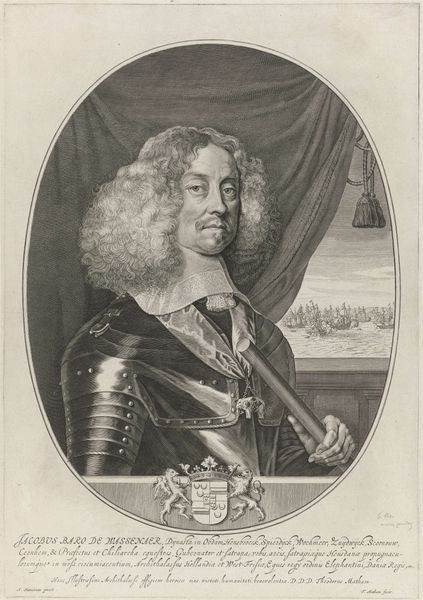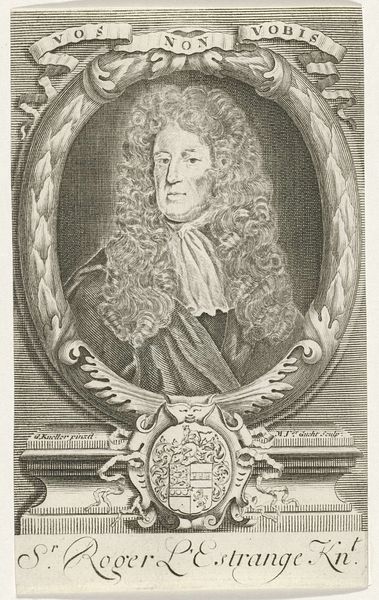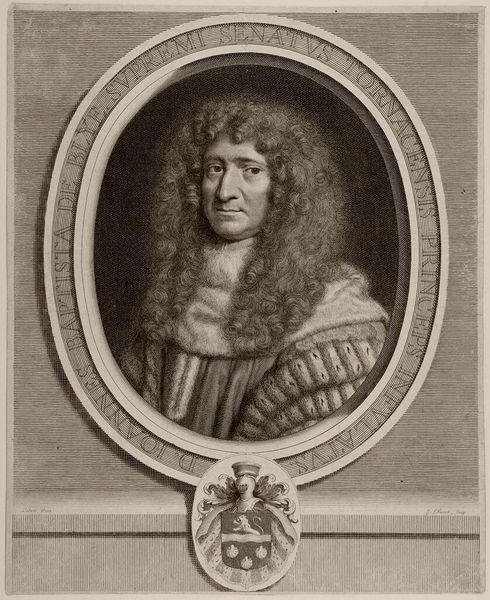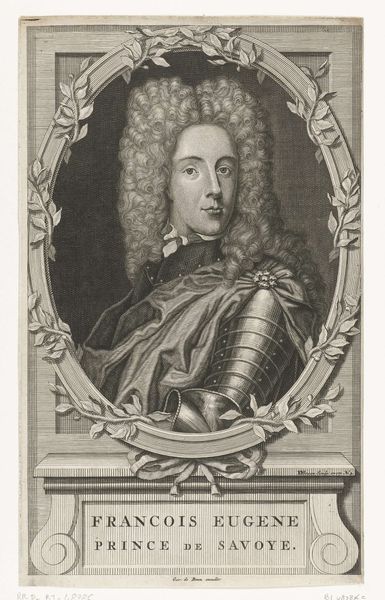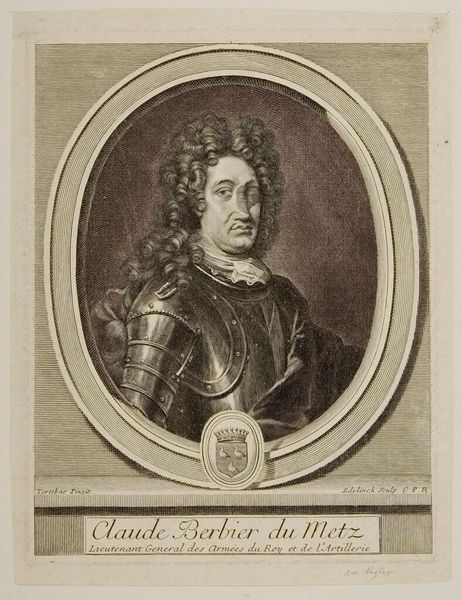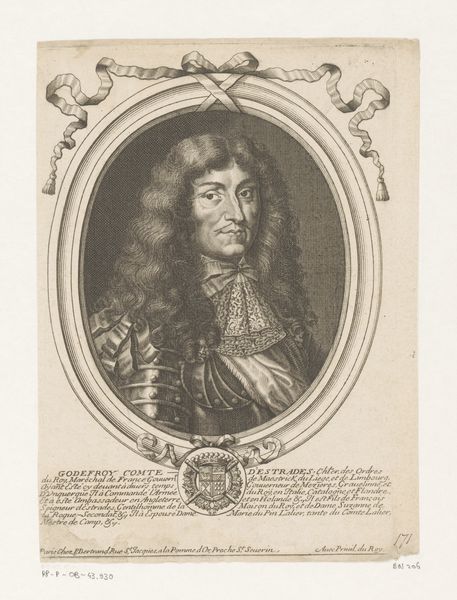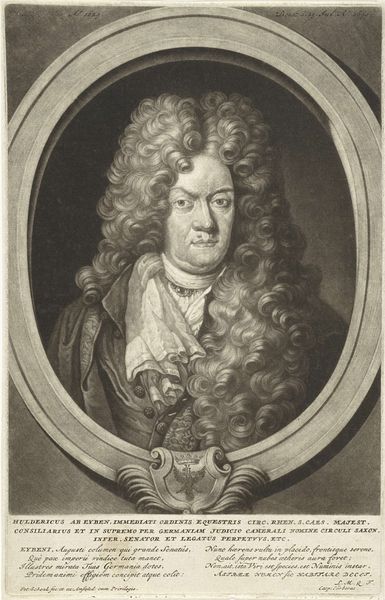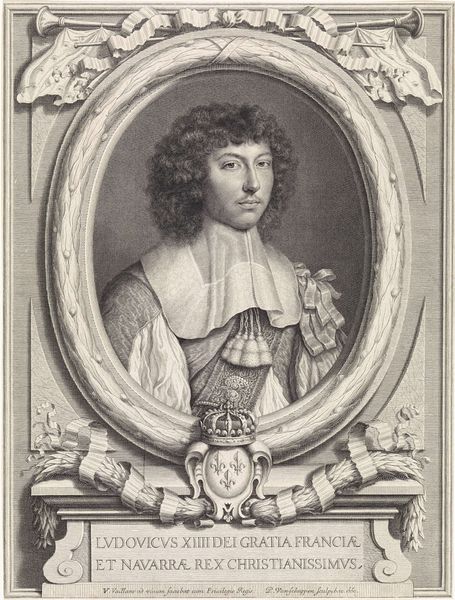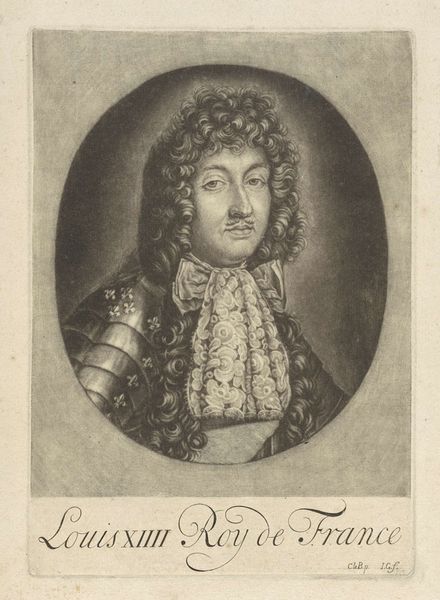
metal, engraving
#
portrait
#
baroque
#
metal
#
old engraving style
#
portrait reference
#
portrait drawing
#
history-painting
#
engraving
Dimensions: width 70 mm, height 131 mm
Copyright: Rijks Museum: Open Domain
Curator: This is a captivating engraving, isn't it? The Rijksmuseum holds this portrayal of Eugéne-François, Prince of Savoy, rendered between 1673 and 1731 by Pieter van Gunst. Editor: The Prince looks every bit the formidable warrior of his time. I must say, there’s a striking formality despite the flamboyant Baroque curls. It’s an intriguing tension. Curator: Observe how Van Gunst used varied line weights. The meticulous hatching around the face and the armor create a beautiful contrast against the smoother textures elsewhere, effectively capturing light and shadow. Semiotically, it presents a powerful reading of status. Editor: Absolutely. He was indeed a powerful figure. The Prince of Savoy was not only a military leader but also a statesman in the service of the Habsburgs. Note the cannon at the bottom; his victories against the Ottomans at the time resonated profoundly with the populace and helped to consolidate power structures across Europe. The engraving’s distribution helped shape public perception. Curator: The oval frame also contributes significantly. It isolates the subject, emphasizing the psychological depth. I think it adds an extra layer of complexity. Notice how the details in his armour, with the fine curves and angles, convey authority? Editor: True. Though such prints often circulated widely, this wasn’t always accessible. This speaks to the role prints had in creating fame but the extent of its influence on common people might be overstated. However, it obviously affected the educated, richer parts of the population, of course. Curator: It’s truly a lesson in form and function. Each stroke seems carefully placed. The composition isn’t merely representational; it embodies the cultural and social status it depicts. Editor: An important artifact that reveals how societal stature gets visualized through prints, with close attention to detail, like we are discussing. A lasting demonstration of how image-making upholds or negotiates history. Curator: Indeed. We dissected a formal and conceptual framework with so few lines and simple curves. Editor: Agreed. A fitting reminder to observe the deeper nuances in art’s political engagement.
Comments
No comments
Be the first to comment and join the conversation on the ultimate creative platform.
